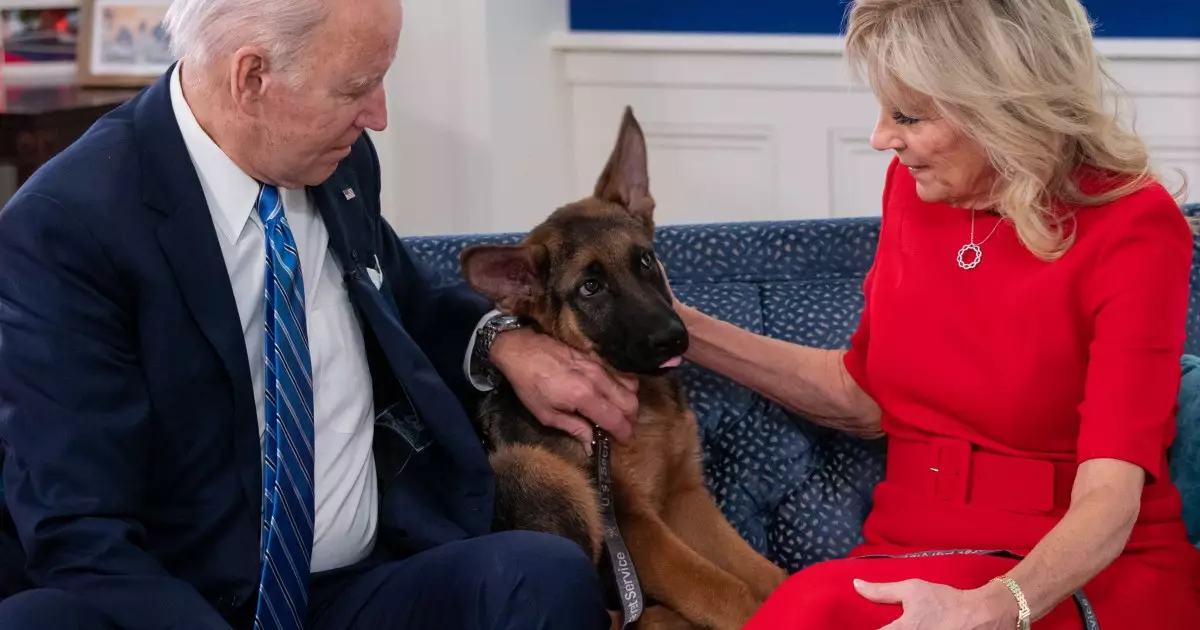As a dog owner, one of the fundamental responsibilities is to provide appropriate training for your pet. This ensures their safety and successful interaction with the world around them. In recent headlines, issues concerning the Biden family’s dogs, specifically their German Shepherds Commander and Major, reveal the complexities that can arise in a high-pressure environment like the White House. Instances of biting and behavioral problems have raised eyebrows and highlighted the need for effective training and management practices.
Since taking office, President Biden’s younger German Shepherd, Commander, has reportedly been involved in numerous biting incidents. According to reports, the U.S. Secret Service has documented ten distinct cases where Commander displayed aggressive behavior, raising significant concerns regarding safety protocols surrounding the First Family’s pets. In one alarming incident, an officer was hospitalized due to a “clamp down” from Commander, revealing just how serious these situations have become.
The fact that these incidents have not been isolated suggests that there may be deeper issues at play. Commander’s behavior is not simply a case of mischief; it indicates a potential lack of proper training specific to the unique challenges posed by the White House environment. The complexities of living and working in such a high-stakes, busy atmosphere may contribute significantly to the dog’s anxiety or misbehavior.
The Secret Service, tasked with ensuring the safety of the president and his family, finds itself in a challenging position when it comes to managing family pets. It has been reported that there are operational protocols for dealing with injuries sustained from bites by these pets, emphasizing that they treat all incidents seriously, akin to workplace injuries. Chief of Communications for the Secret Service, Anthony Guglielmi, emphasized the importance of addressing these incidents thoroughly, indicating that procedures exist for reporting and managing such injuries.
The juxtaposition of White House duties and potential hazards posed by pets illustrates the need for an organized approach to pet management. The concern expressed in internal emails indicates that the safety of not only the First Family but also the staff working in proximity to them must be taken into account. Given the potential for serious injuries, it becomes imperative for the Bidens to implement effective training strategies that not only assist Commander but also reassure the security personnel about their safety.
In response to the biting incidents, Elizabeth Alexander, the communications director for Dr. Jill Biden, assured the public that they are actively exploring novel training methods for Commander. This brings to light the critical importance of a structured training program in addressing canine aggression. Understanding that a dog may exhibit biting behavior as a form of communication—expressing fear, discomfort, or anxiety—is vital for pet parents navigating these situations.
Emphasizing positive reinforcement techniques—such as reward-based training and clicker training—can play a crucial role in rehabilitating a dog with behavior issues. These methods not only promote desirable behaviors, but they also contribute to building trust and a healthy relationship between the owner and the pet. The goal should be to create an environment where the dog feels secure and understood, which could lead to a marked reduction in aggressive tendencies.
Moreover, creating a stimulating and engaging environment where a dog can thrive is also paramount. Regular exercise, socialization with well-behaved dogs, and mental challenges can significantly contribute to reducing anxiety within family pets, thus mitigating the risk of aggressive behaviors. Such strategies must be integrated into everyday life to foster a healthy balance and contribute to a dog’s well-rounded development.
In light of the incidents involving Commander and even previous issues with Major, a clear path forward is necessary. For First Families, the pressure of maintaining a polished public image coupled with the realities of managing pets can lead to complications. However, by prioritizing comprehensive training programs tailored to suitable environments and addressing underlying behavioral triggers, responsible pet ownership can prevail even in high-profile situations.
The incidents at the White House serve not only as a reminder of the challenges of pet ownership but also as an opportunity to rethink how pets can coexist alongside demanding responsibilities. With effective training and understanding, it is entirely possible to navigate these challenges. Patience and consistency, coupled with a commitment to nurturing a bond of trust with pets, can transform the dynamics of any household—whether it be in a modest home or the historical halls of the White House.

